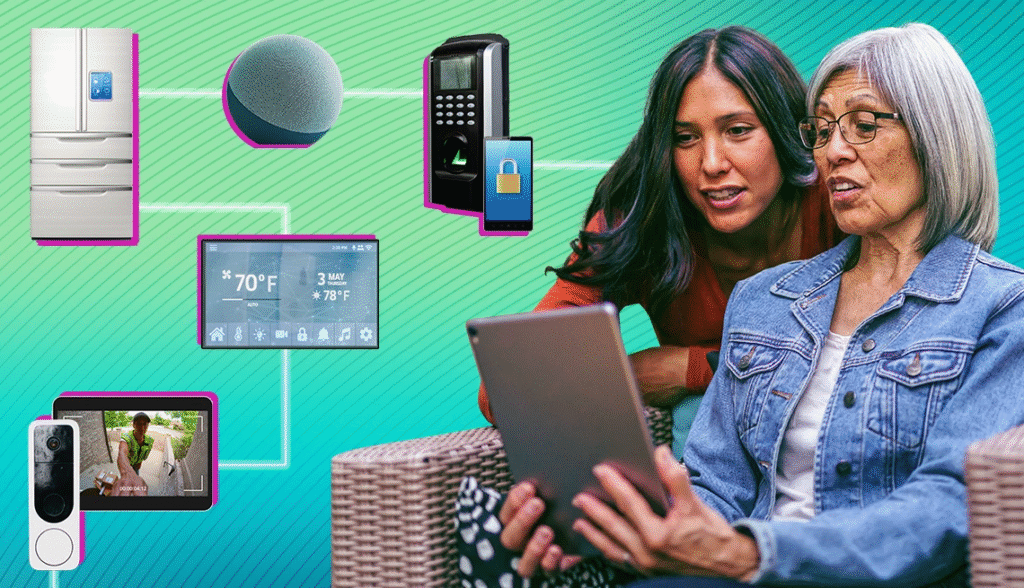What Does Aging-In-Place Mean?
Aging-in-place means living at home as you grow older. Many people prefer to stay in familiar surroundings. It makes them feel comfortable and safe. But staying at home can also bring challenges. Older adults may face risks like falls or accidents. Technology can help solve some of these problems.
What Are Smart Motion Sensors?
Smart motion sensors are small devices. They detect movement in a room or space. These sensors can be used in homes, offices, or public places. They are part of smart home technology. They help improve safety and convenience.
Why Are Motion Sensors Important for Older Adults?
Motion sensors can make aging-in-place safer. They monitor movement and send alerts if something unusual happens. For example, if an older adult falls, the sensor can send a notification. This helps family members or caregivers act quickly.
Benefits of Smart Motion Sensors for Aging-In-Place
Smart motion sensors offer many benefits. These benefits make them valuable for seniors and their families.
- Fall Detection: Sensors can detect sudden movements or lack of movement.
- Emergency Alerts: Notifications can be sent to caregivers or family members.
- Energy Saving: Sensors turn lights on and off automatically.
- Peace of Mind: Families can feel secure knowing their loved ones are safe.
- Ease of Use: Smart sensors work without needing much input from users.

Credit: www.aarp.org
How Do Motion Sensors Work?
Motion sensors use technology to detect movement. Some use infrared light to sense heat. Others use radar to track motion. When they detect movement, they send signals to a connected device. These signals can trigger lights, alarms, or notifications.
Types of Smart Motion Sensors
There are different types of motion sensors. Each type works in its own way. Here are some common types:
| Type | Description |
|---|---|
| Infrared Sensors | Detect heat from people or animals. |
| Ultrasonic Sensors | Use sound waves to sense movement. |
| Microwave Sensors | Use radar to detect motion. |
| Dual Technology Sensors | Combine two types for better accuracy. |

Credit: www.instagram.com
Where Should You Place Motion Sensors?
Placement is important for motion sensors. Here are some tips for placing them:
- Place sensors near stairs to detect falls.
- Install sensors in hallways to track movement at night.
- Put sensors in bathrooms for added safety.
- Use sensors near entrances to monitor visitors.
- Avoid placing sensors in direct sunlight or near heating vents.
Features to Look for in Motion Sensors
Not all motion sensors are the same. Look for features that suit your needs. Here are some features to consider:
- Battery Life: Choose sensors with long-lasting batteries.
- Range: Make sure the sensor covers the area you need.
- Connectivity: Check if the sensor works with your smart devices.
- Alert System: Look for sensors that send notifications quickly.
- Ease of Installation: Pick sensors that are simple to set up.
Real-Life Examples of Motion Sensors Helping Seniors
Motion sensors have helped many older adults stay safe. Here are some examples:
- A sensor detected a fall in a bathroom and alerted family members.
- Motion sensors turned on lights when an elderly person walked at night.
- Sensors helped track daily activities to ensure seniors were active.
Challenges with Motion Sensors
Motion sensors are helpful, but they have challenges. Sometimes, sensors can give false alerts. For example, pets can trigger motion sensors. Placement mistakes can also reduce effectiveness. Regular maintenance is needed to keep sensors working well.
Why Motion Sensors Are Worth Considering
Smart motion sensors are a good choice for aging-in-place safety. They are easy to use and provide peace of mind. Families can feel confident about their loved one’s safety. Technology is helping make homes safer for older adults.
Frequently Asked Questions
What Are Smart Motion Sensors?
Smart motion sensors detect movement and send alerts or trigger actions for safety and convenience.
How Do Motion Sensors Help With Aging-in-place?
They monitor movement, detect inactivity, and alert caregivers to ensure seniors’ safety at home.
Can Motion Sensors Detect Falls In Seniors?
Some advanced motion sensors can detect falls and send emergency notifications to caregivers or family members.
Are Smart Motion Sensors Easy To Install?
Yes, most are simple to install and require minimal technical knowledge or tools.

